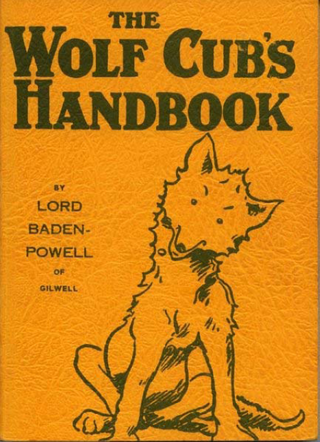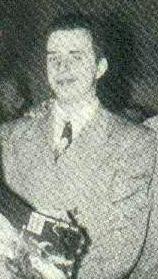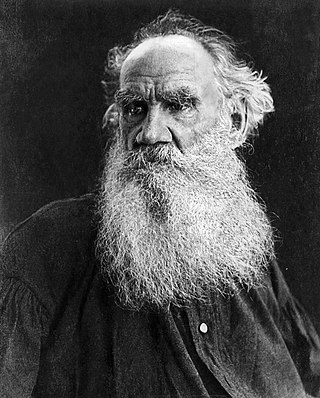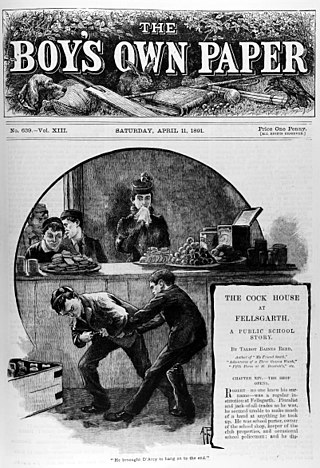
The Magazine of Fantasy & Science Fiction is a U.S. fantasy and science-fiction magazine first published in 1949 by Mystery House, a subsidiary of Lawrence Spivak's Mercury Press. Editors Anthony Boucher and J. Francis McComas had approached Spivak in the mid-1940s about creating a fantasy companion to Spivak's existing mystery title, Ellery Queen's Mystery Magazine. The first issue was titled The Magazine of Fantasy, but the decision was quickly made to include science fiction as well as fantasy, and the title was changed correspondingly with the second issue. F&SF was quite different in presentation from the existing science-fiction magazines of the day, most of which were in pulp format: it had no interior illustrations, no letter column, and text in a single-column format, which in the opinion of science-fiction historian Mike Ashley "set F&SF apart, giving it the air and authority of a superior magazine".

Daniel Carter "Uncle Dan" Beard was an American illustrator, author, youth leader, Georgist and social reformer who founded the Sons of Daniel Boone in 1905, which Beard later merged with the Boy Scouts of America (BSA).

Scout Life is the monthly magazine of the Boy Scouts of America (BSA). Its target readers are boys and girls between the ages of 6 and 18. The magazine‘s headquarters are in Irving, Texas.
The Sons of Daniel Boone, later the Boy Pioneers of America, was a youth program developed by Daniel Carter Beard in 1905 based on the American frontiersman. When Dan Beard joined the Boy Scouts of America (BSA) in 1910 as one of their national Scout commissioners, he merged his group into the fledgling BSA.

A woggle is a device to fasten the neckerchief, or scarf, worn as part of the Scout or Girl Guides uniform, originated by a Scout in the 1920s.
The Amalgamated Press (AP) was a British newspaper and magazine publishing company founded by journalist and entrepreneur Alfred Harmsworth (1865–1922) in 1901, gathering his many publishing ventures together under one banner. At one point the largest publishing company in the world, AP employed writers such as Arthur Mee, John Alexander Hammerton, Edwy Searles Brooks, and Charles Hamilton. Its subsidiary, the Educational Book Company, published The Harmsworth Self-Educator, The Children's Encyclopædia, and Harmsworth's Universal Encyclopaedia. The company's newspapers included the Daily Mail, the Daily Mirror, The Evening News, The Observer, and The Times. At its height, AP published over 70 magazines and operated three large printing works and paper mills in South London.

The Boy's Own Paper was a British story paper aimed at young and teenage boys, published from 1879 to 1967.

The Wolf Cub's Handbook is an instructional handbook on Wolf Cubs training, published in various editions since December 1916. Early editions were written and illustrated by Robert Baden-Powell with later editions being extensively rewritten by others. The book has a theme based on Rudyard Kipling's The Jungle Book jungle setting and characters.

Robert Augustine Ward "Doc" Lowndes was an American science fiction author, editor and fan. He was known best as the editor of Future Science Fiction, Science Fiction, and Science Fiction Quarterly, among many other crime-fiction, western, sports-fiction, and other pulp and digest sized magazines for Columbia Publications. Among the most famous writers he was first to publish at Columbia was mystery writer Edward D. Hoch, who in turn would contribute to Lowndes's fiction magazines as long as he was editing them. Lowndes was a principal member of the Futurians. His first story, "The Outpost at Altark" for Super Science in 1940, was written in collaboration with fellow Futurian Donald A. Wollheim, uncredited.

This is a list of works by Russian writer Leo Tolstoy (1828–1910), including his novels, novellas, short stories, fables and parables, plays, and nonfiction.
The Heinlein juveniles are the science-fiction novels written by Robert A. Heinlein for Scribner's young-adult line. Each features "a young male protagonist entering the adult world of conflict, decisions, and responsibilities." Together, they tell a loosely connected story of space exploration. Scribner's published the first 12 between 1947 and 1958, but rejected the 13th, Starship Troopers. That one was instead published by Putnam. A 14th novel, Podkayne of Mars, is sometimes listed as a "Heinlein juvenile", although Heinlein himself did not consider it to be one.

The Sentinel is a collection of science fiction short stories by English writer Arthur C. Clarke, originally published in 1983.

Magazines intended for boys fall into one of three classifications. These are comics which tell the story by means of strip cartoons; story papers which have several short stories; and pulp magazines which have a single, but complete, novella in them. The latter were not for the younger child and were often detective or western in content and were generally greater in cost. Several titles were published monthly whereas the other two categories were more frequent.

Scouting for Boys: A handbook for instruction in good citizenship is a book on Boy Scout training, published in various editions since 1908. Early editions were written and illustrated by Robert Baden-Powell with later editions being extensively rewritten by others. The book was originally a manual for self-instruction in observation, tracking and woodcraft skills as well as self-discipline and self-improvement, about the British Empire and duty as citizens with an eclectic mix of anecdotes and unabashed personal observations and recollections. It is pervaded by a degree of moral proselytizing and references to the author's own exploits. It is based on his boyhood experiences, his experience with the Mafeking Cadet Corps during the Second Boer War at the siege of Mafeking, and on his experimental camp on Brownsea Island, England.
The New England Boy Scouts (NEBS) was an early American Scouting organization that split off from the American Boy Scouts in 1910 and merged with the Boy Scouts of America by 1916.

Chums was a boys' weekly newspaper started in 1892 by Cassell & Company and later, from 1927, published by Amalgamated Press. The publisher gathered the weekly paper into monthly and annual editions. The monthly versions were published on the 25th of the month, and up to November 1920 included all the content of the weekly editions. From then on, the monthly editions had all the story content of the weeklies, but left out the covers. This left a gap which was then filled by short stories, articles and even serials that were not included in the weekly edition. The serial ceased publication in 1941.

Samuel Orchart Beeton was an English publisher, best known as the husband of Mrs Beeton and publisher of Mrs Beeton's Book of Household Management. He also founded and published Boy's Own Magazine (1855–90), the first and most influential boys' magazine.

Real Boys: Rescuing Our Sons from the Myths of Boyhood is a 1998 nonfiction book about boyhood and boy culture by clinical psychologist Dr William S. Pollack, in which the author asserts that toxic conceptions of masculinity in boy culture leads to boys doing poorly in education and health and having higher involvement in violent crimes and suicide than girls.
Keith Monroe was an American author of children's science fiction and of books and magazine articles about Boy Scouting.

Critical and Miscellaneous Essays is the title of a collection of reprinted reviews and other magazine pieces by the Scottish essayist, historian and philosopher Thomas Carlyle. Along with Sartor Resartus and The French Revolution it was one of the books that made his name. Its subject matter ranges from literary criticism to biography, history and social commentary. These essays have been described as "Intriguing in their own right as specimens of graphic and original nonfiction prose…indispensable for understanding the development of Carlyle's mind and literary career", and the scholar Angus Ross has noted that the review-form displays in the highest degree Carlyle's "discursiveness, allusiveness, argumentativeness, and his sense of playing the prophet's part."















